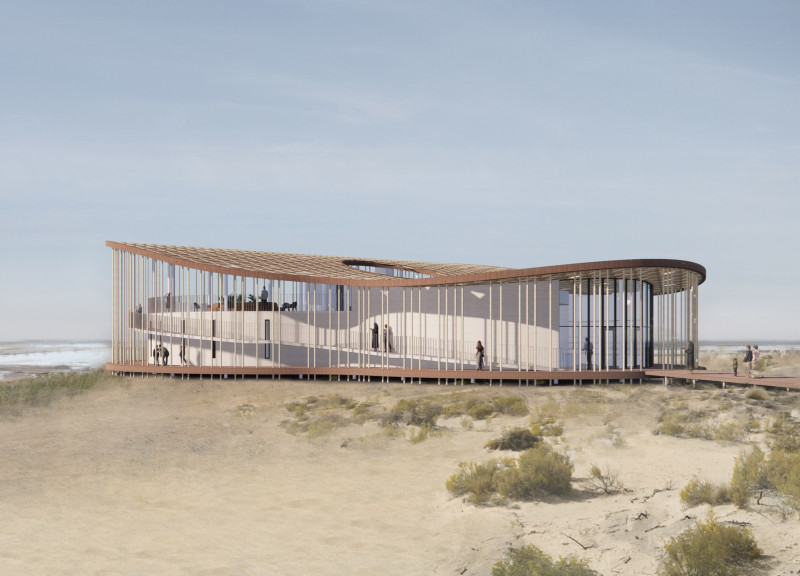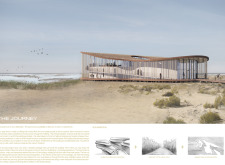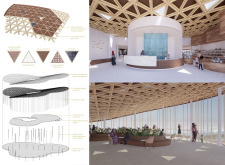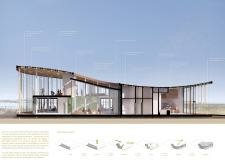5 key facts about this project
The project is designed to reflect natural forms, drawing inspiration from local geological features and flora. Its curvature and layout promote a seamless flow between different areas, encouraging visitors to move through spaces that facilitate both individual reflection and collective interaction. The architectural design integrates sustainability into its framework, utilizing a combination of renewable materials and energy-efficient systems. These elements are not just functional but also enhance the overall experience of the environment.
Innovative Design Approaches and Materiality
One of the project’s key features is the extensive use of bamboo in its structural system, chosen for its sustainability and strength. This decision underscores the project’s commitment to ecological values, allowing for lightweight yet sturdy construction. The roof employs an innovative design that balances coverage and natural light, making effective use of insulated glazing to optimize energy performance.
Additionally, the raised foundation mitigates the impact on the natural landscape while allowing for proper drainage, further enhancing the building's sustainability. Integrating solar panels within the structure allows it to harness renewable energy effectively, reducing reliance on external sources and promoting energy independence.
Spatial Organization and Functionality
The spatial arrangement within "The Journey" is methodically planned. Areas dedicated to interaction and community engagement are separated from administrative and support functions, allowing for focused programming within each zone. The design features open and inviting spaces that encourage fluid movement, supporting both individual exploration and social gatherings.
The integration of natural ventilation systems reduces the dependence on mechanical air conditioning, enhancing occupant comfort while minimizing energy consumption. Water features serve not only an aesthetic purpose but also contribute to cooling and humidity regulation, reflecting the project’s commitment to harmonizing architectural design with environmental needs.
For further insights into the architectural plans, sections, designs, and ideas that underlie "The Journey," interested readers are encouraged to explore the project presentation. This examination will provide a deeper understanding of how these elements combine to create a space that truly embodies the principles of thoughtful architecture and environmental sustainability.


























